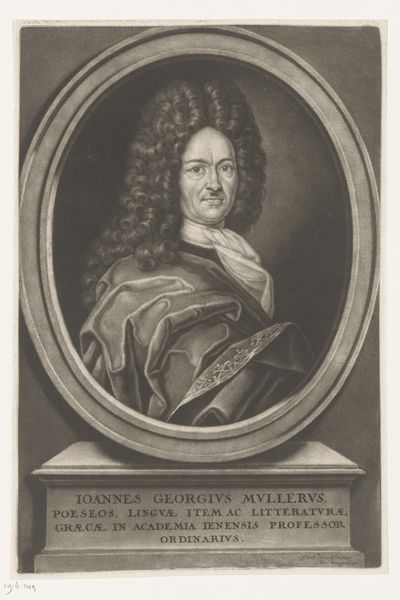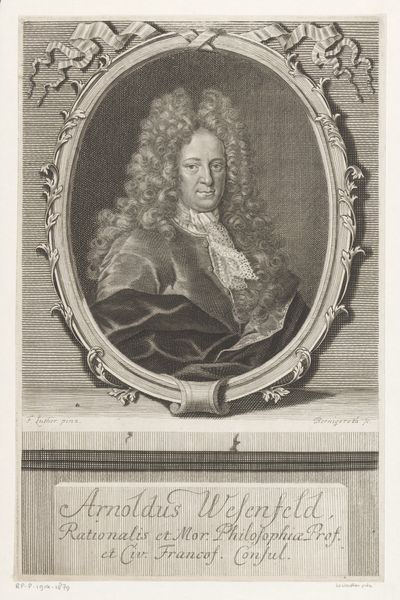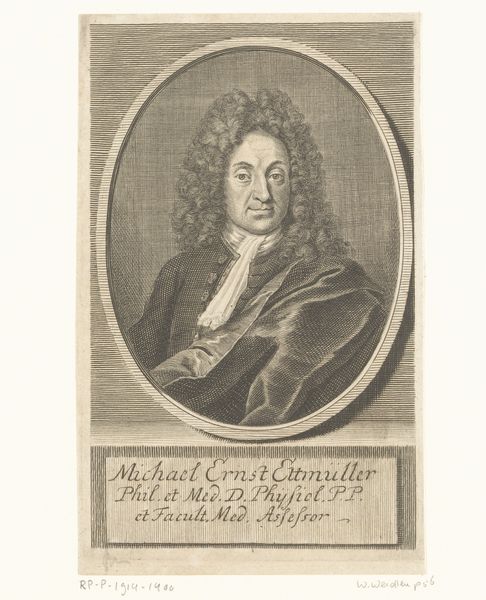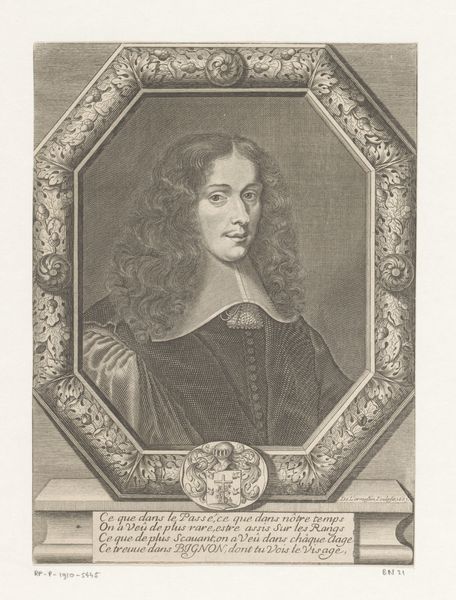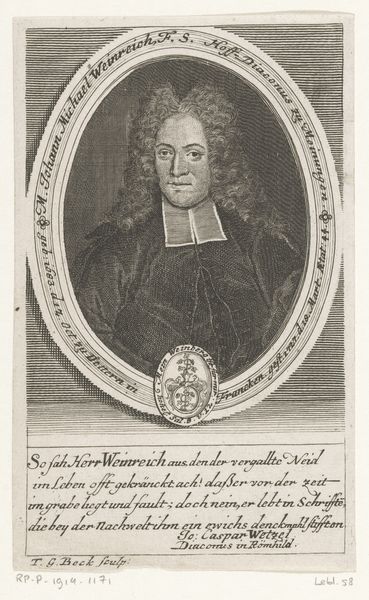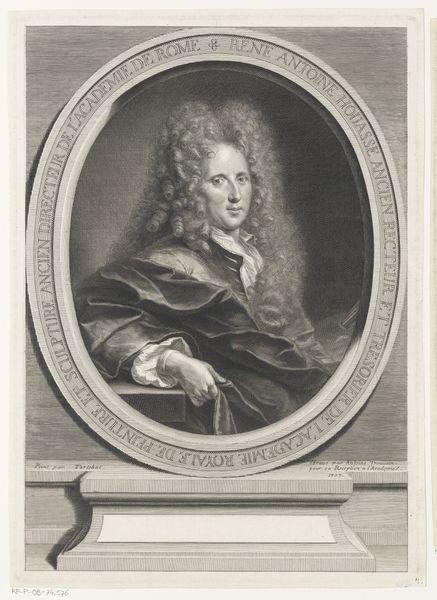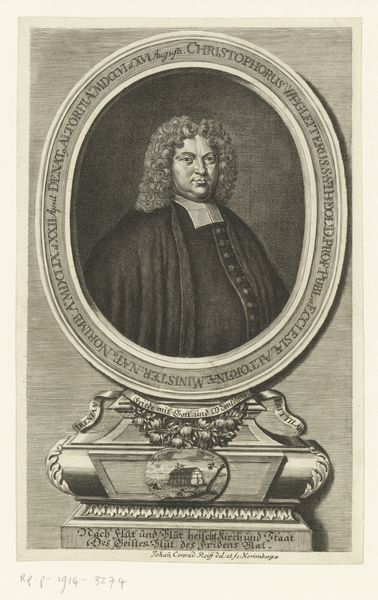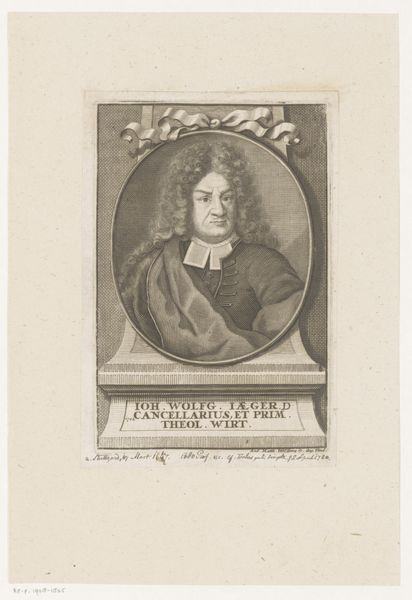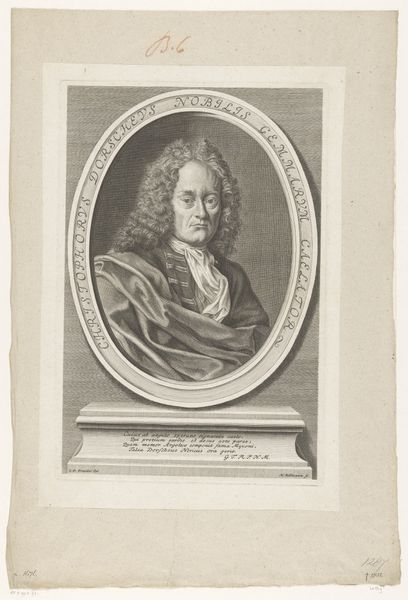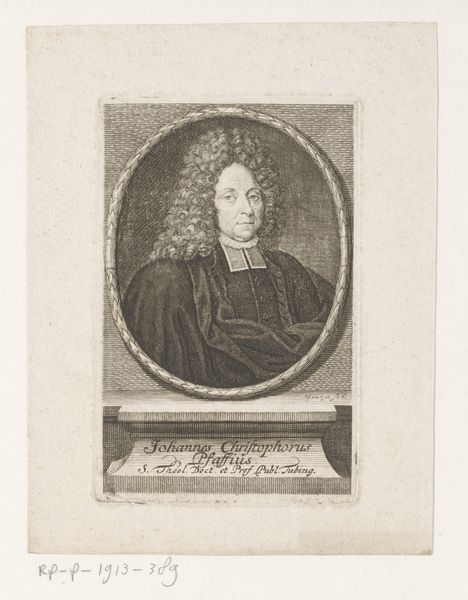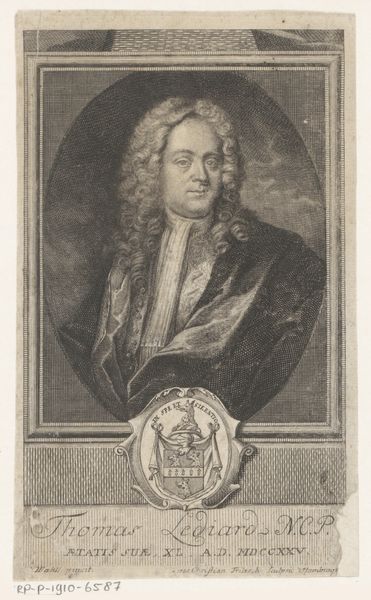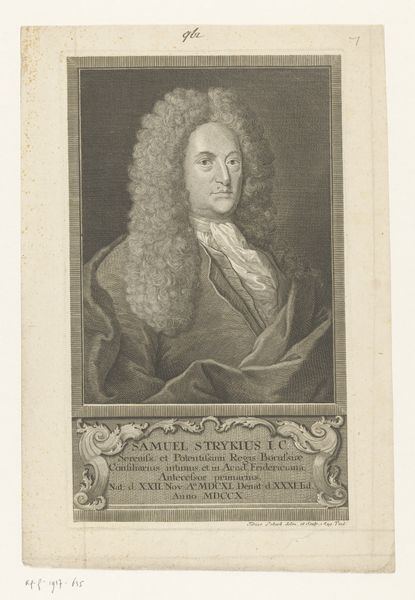
drawing, print, paper, graphite, engraving
#
portrait
#
drawing
#
baroque
# print
#
charcoal drawing
#
paper
#
portrait reference
#
framed image
#
graphite
#
portrait drawing
#
engraving
Dimensions: height 310 mm, width 212 mm
Copyright: Rijks Museum: Open Domain
Curator: This engraving, now residing in the Rijksmuseum collection, is entitled "Portret van Burkhard Gotthelf Struve." It's estimated to have been created sometime between 1681 and 1725 by Christoph Weigel. The detail is extraordinary, especially considering its medium. Editor: The overall symmetry of the oval frame is quite appealing. I also can't help but notice the dramatic contrast between the stark white scarf and the dark robes, which immediately directs the eye towards his face. There's something almost theatrical about the composition. Curator: Absolutely. Weigel, the artist, was known for his meticulous approach. Considering this work’s Baroque style and the materials at hand – paper, graphite, and engraving tools – he certainly seems intent on portraying not only the man, but also his societal position through symbolic costuming and structured lettering. Do you think the printmaking process allowed for wider distribution, potentially influencing Struve's image and authority at the time? Editor: Possibly, yes, but how does this relate to Weigel’s deliberate play with light and shadow to shape the face and give it form? The sharp, clean lines used for this Baroque-era drawing creates a certain drama, reflecting perhaps not only literal accuracy but also how portraits shape an individual’s legacy through stylistic rendering, creating a long-lasting aesthetic form that echoes conventions, you know? Curator: Certainly, portraits held immense power, and they acted as significant visual markers for class and social role at a moment where production of portraits started becoming more easily accessible for certain bourgeois circles, especially if someone like Burkhard Gotthelf Struve was seeking to expand awareness of their professorship or bibliographic pursuits! Editor: Well put. It’s really quite fascinating how something produced through these processes, graphite on paper etched by engraving techniques, transforms into an image laden with meaning beyond mere likeness. Curator: It's that intersection of technique and social use that interests me the most; the mechanics used, the materiality of ink on paper contributing not just an artwork, but something ingrained and active within a network. Editor: Yes, a powerful thought, a truly intricate and captivating demonstration, all formed simply of clean visual expression.
Comments
No comments
Be the first to comment and join the conversation on the ultimate creative platform.
